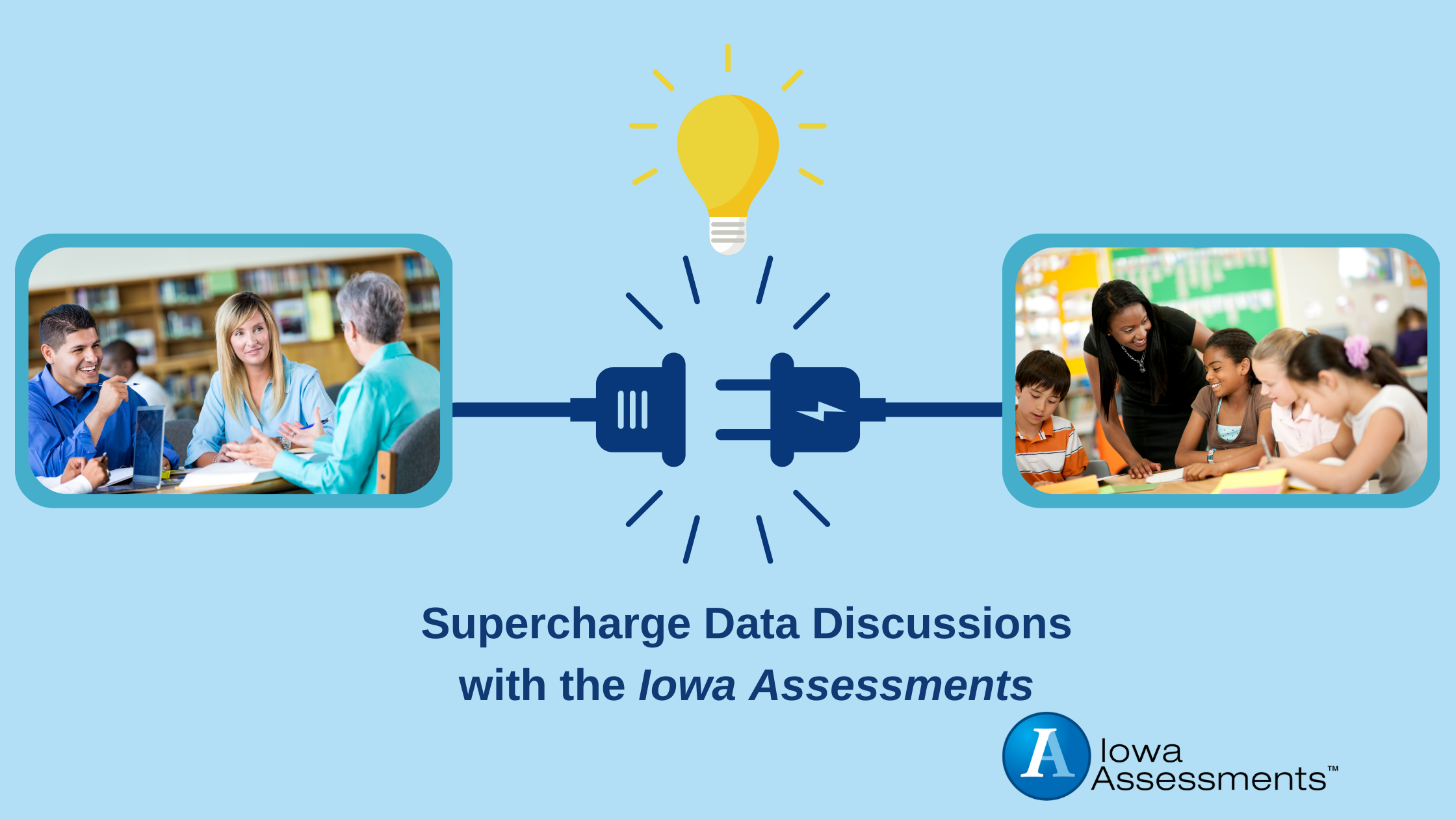Supercharge Data Discussions with the Iowa Assessments

"Normative information can be used as a measure of growth and is especially valuable in times of change and interruption."
Student assessment data is a powerful tool to guide instruction. Schools can use Iowa Assessment data to establish and monitor student academic growth goals.
Using a reliable and valid measure of student learning at similar points in instruction can provide helpful information about student growth. The Iowa Assessments can provide a fixed benchmark for future performance and national and local frames of reference for measuring student growth or decline.
Two metrics -- the National Standard Score and the National Percentile Rank -- can be used to measure growth across cohorts or across classes within the same grade.
National Standard Score (NSS)
The National Standard Score scale illustrates a continuous measure of student performance from kindergarten through high school. Scores from each grade level can be directly compared and related to scores from other grade levels. Grade-to-grade scores can be used to understand growth and establish goals.
National Percentile Rank (NPR)
Normative information can be used as a measure of growth and is especially valuable during times of change and interruption. The national percentile rank score allows teachers to compare student performance year-over-year. Positive change in NPRs between years suggest that a student is growing academically faster, relative to the norm group. Declines in NPRs suggest that a student is growing academically at a slower pace, relative to their peers.
The appropriateness of the reference group is critical for making comparisons and interpretations. Normative information for the Iowa Assessments is based on a nationally representative sample of students from public and private schools.
Interpreting the Metrics
The following illustrates the use of these simple metrics when multiple data points are available for a group. In this example, a school administered the Iowa Assessments for five consecutive years. The third year was most affected by COVID. To maintain the same rate of academic growth year-over-year in a particular subject area, the student's expected NPR must remain the same. Yet, in this example, each grade level experienced a growth rate decline from 2018 to 2022. Students in grades 6-8 experienced the largest decrease in scores between 2019 and 2020, exhibiting a loss of 10 points in grades 6 and 7, and 11 points in grade 8. A decrease in NPRs year-over-year indicates additional support needed, with a 10-point NPR decrease equating to a loss of approximately 8 months of instruction. With this type of data in hand, administrators and teachers can identify the rate at which students are growing academically, the full impact of COVID on their students' rate of learning, and just how much additional instruction is likely needed to move student learning forward.
-1.png?width=627&height=604&name=Dr.%20Welch%20blogs%20-%20performance%20summary%20(2)-1.png)
Iowa Assessments Report Guides

.png?width=900&name=Copy%20of%20Summative%20assessment%20Assessment%20OF%20Learning%20Administered%20at%20the%20end%20of%20instruction%20How%20well%20did%20the%20student%20master%20the%20designated%20set%20of%20standards%20(5).png)


-1.png)